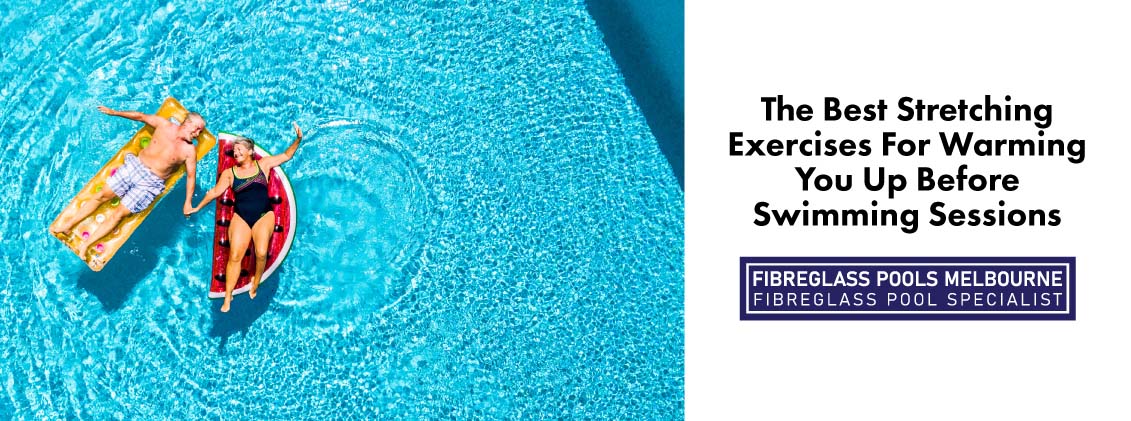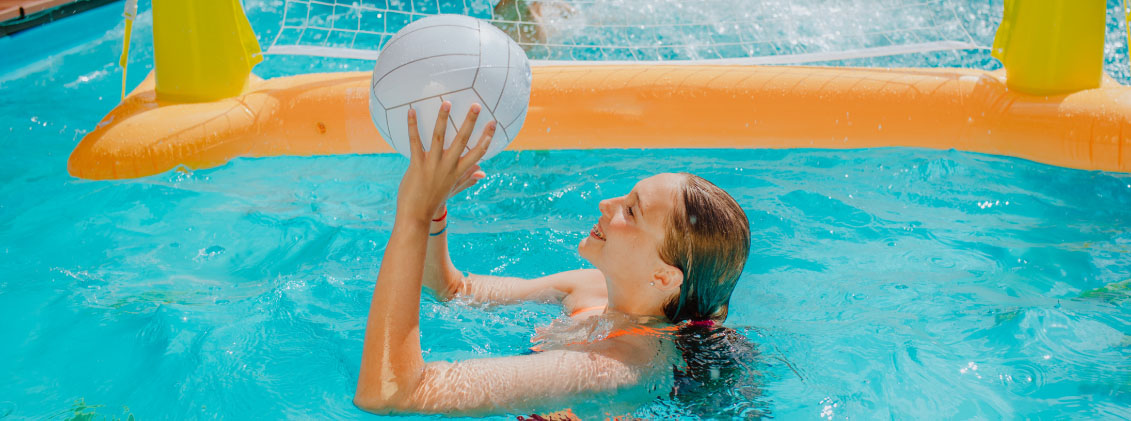The Best Stretching Exercises For Warming You Up Before Swimming Sessions
If your primary purpose for swimming is recreation, you probably don't need to perform stretching exercises before entering the pool. However, for those who swim primarily to work out, stretching exercises are vital. Any form of high-intensity sport requires athletes to warm up before they engage in it and swimming is no different.

So, if you’re a swimmer who swims mainly to exercise and train, you’re reading exactly what you need to. In this article, we’ll take you through the best stretching exercises that will help you warm up before you enter the pool. Performing these exercises can ensure that your body is ready for a long session in the pool, and they can reduce the risks of sustaining injuries as well.
1. Standing T's
How to perform this exercise:
- Stand in a split stance
- Raise both arms out to their respective sides
- Keep the arms parallel to the floor
- Bring the arms forward at the same time
- Take them back at the same time as well
- While taking them back, make sure that the shoulder blades cave in towards the direction of the spine
Why perform this exercise?
Standing T's are great for opening up and stretching the chest muscles. At the same time, they strengthen the rotator cuff. Performing this exercise regularly can drastically reduce the risks of rotator cuff injuries.
2. Lunge and stretch
How to perform this exercise:
- Perform a forward lunge with one leg
- Raise the arm on the back leg’s side straight up – if you’ve performed the forward lunge with your left leg, you have to raise the right arm
- Tilt the arm gradually backwards
- Keep glutes and abs engaged and ankles, knees, and hips in line. Also, make sure that your hips are parallel to the floor.
Why perform this exercise?
The lunge and stretch is the ideal warm-up exercise for opening up your lats, quads, abs, and hip flexors, which are collectively known as the anterior chain.

3. 90/90 stretch
How to perform this exercise:
- Lie sideways on the floor with one leg on top of the other
- While keeping the lower leg straight, do an upper leg bend – after bending the upper leg, the knee and hip should be around 90 degrees
- Extend arms out towards the front, i.e. the direction you’re facing – they should be perpendicular to the body.
- Make the palms of the hands touch.
- While pressing the bent knee into the floor, raise your upper arm and take it to the other side completely.
Check out how swimming in a mineral pool can improve your health!
Why perform this exercise?
The 90/90 stretch is one of the best exercises for rotating the spine, which increases your overall spinal flexibility. If you're a regular practitioner of backstroke, you should add this exercise to your warm-up routine.
4. Arm circles
How to perform this exercise:
- Stand straight with your legs apart
- Raise both arms to the sides – they should be parallel to the floor
- Circle both arms forward simultaneously for 30 seconds
- Circle them backward simultaneously for 30 seconds
- Repeat until the arms feel relaxed and at ease
Why perform this exercise?
Arm circles are ideal for doing away with arm and shoulder stiffness. The exercise specifically targets the back, biceps, shoulders, and triceps. Not including this stretching exercise in your warm-up routine can increase the chances of sustaining shoulder injuries. However, performing it before every swimming session can prepare your arms and shoulders. For freestyle swimmers, this is a particularly helpful exercise.

5. Quad rocking
How to perform this exercise:
- Get down on the floor squarely and rest your body on your hands and knees.
- Take your hips backward and position the buttocks on your heels.
- As you take your hips backward, stretch your arms without raising them from the floor and also engage your abs. The arms shouldn’t bend.
- Return to the square starting position and maintain a flexed and extended spine.
- Repeating the steps 6 times should be sufficient.
Why perform this exercise?
This is another great workout for the spine. It also stretches the arms and works the thigh muscles.
6. 25-30 minute pool warm-up
Once you’ve performed all the previous stretching exercises, it’s time to enter the pool and do a few warm-up exercises in the water. Here’s what your 25 – 30 minute pool warm-up should consist of:
- Start with a drill pace swim and focus on the kicking and stroke technique. A 400 – 800 metres swim should be good enough.
- After you complete the drill pace swim, move on to a few race-pace swims. These swims should be more intense than the drill pace swim. Be cautious with how intense you are during the race-pace swims. Remember, their purpose is to warm your body up and not to cause tiredness and/or fatigue. During the race-pace swims, concentrate on getting your stroke techniques right.
- Next, cool the body down with a 200 – 400 metres drill pace swim.
If you’re doing this warm-up prior to an event, you should make sure that there’s at least a 30-minute gap between the end of the warm-up and the commencement of the event.
Is your home suitable for a fibreglass pool? See the details here!
7. Breathing exercises
These aren’t stretching exercises, but they’re just as important. Breathing exercises prior to a training session or an event can offer plenty of benefits. For starters, they can enhance your performance and focus. They’re also great for reducing both physiological and psychological anxiety symptoms.
Here’s how you can perform breathing exercises:
- Close your eyes and breathe calmly and consistently for a 2 – 3-minute period. During this period, pay attention to how your chest rises and falls as you inhale and exhale.
- For the next 2 – 3-minute period, turn your attention toward your breathing sound. As you start feeling more relaxed, the sound should get louder.
- Continue breathing for 3 – 4 more minutes and during this period, concentrate on relaxing your chest muscles. During these 3 – 4 minutes, your chest should rise higher with every inhalation and fall deeper with every exhalation.
Once you’ve completed the set, repeat it one more time.
To Conclude
So, that’s about it for this article. We hope these exercises serve you well ahead of your training sessions and competitive events.

